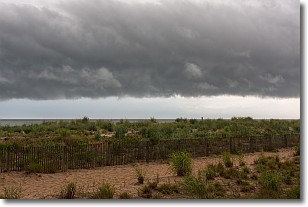Weather Alert in Louisiana
Flood Warning issued May 11 at 8:50PM CDT by NWS New Orleans LA
AREAS AFFECTED: St. Tammany, LA; Hancock, MS; Pearl River, MS
DESCRIPTION: ...The Flood Warning continues for the following rivers in Louisiana...Mississippi... Tangipahoa River Near Robert affecting Tangipahoa Parish. Mississippi River At Donaldsonville affecting Ascension Parish. Mississippi River At Baton Rouge affecting West Baton Rouge and East Baton Rouge Parishes. Mississippi River At Red River Landing affecting West Feliciana, Pointe Coupee and East Baton Rouge Parishes. Pearl River Near Pearl River affecting Pearl River, St. Tammany and Hancock Counties. Pearl River Near Bogalusa affecting Pearl River and Washington Counties. ...The Flood Warning is extended for the following rivers in Louisiana... Bogue Chitto River Near Bush affecting St. Tammany Parish. For the Lower Mississippi River...including Red River Landing, Baton Rouge, Donaldsonville...Minor to Moderate flooding is forecast. For the Bogue Chitto River...including Bush...Minor flooding is forecast. For the Lower Pearl River...including Bogalusa, Pearl River...Minor flooding is forecast. * WHAT...Minor flooding is occurring and minor flooding is forecast. * WHERE...Pearl River near Pearl River. * WHEN...Until further notice. * IMPACTS...At 16.0 feet, Lower portions of streets in River Gardens Subdivision will begin to flood. Secondary roads to the river and throughout Honey Island Swamp will remain inundated. Property in the vicinity of the gage is flooded threatening about 20 homes along the left bank. The Bogue Chitto National Wildlife Refuge will be closed to hunting at the 15.5 foot stage. * ADDITIONAL DETAILS... - At 8:00 PM CDT Sunday the stage was 16.0 feet. - Bankfull stage is 12.0 feet. - Forecast...The river is expected to rise to a crest of 16.1 feet early tomorrow afternoon. - Flood stage is 14.0 feet. - http://www.weather.gov/safety/flood
INSTRUCTION: Turn around, don't drown when encountering flooded roads. Most flood deaths occur in vehicles. Motorists should not attempt to drive around barricades or drive cars through flooded areas. Caution is urged when walking near riverbanks. Additional information is available at www.weather.gov/lix. Click on the Rivers and Lakes menu for forecasts and observations. The next statement will be issued late tonight at 345 AM CDT.
Want more detail? Get the Complete 7 Day and Night Detailed Forecast!
Current U.S. National Radar--Current
The Current National Weather Radar is shown below with a UTC Time (subtract 5 hours from UTC to get Eastern Time).

National Weather Forecast--Current
The Current National Weather Forecast and National Weather Map are shown below.

National Weather Forecast for Tomorrow
Tomorrow National Weather Forecast and Tomorrow National Weather Map are show below.

North America Water Vapor (Moisture)
This map shows recent moisture content over North America. Bright and colored areas show high moisture (ie, clouds); brown indicates very little moisture present; black indicates no moisture.

Weather Topic: What are Shelf Clouds?
Home - Education - Cloud Types - Shelf Clouds
 Next Topic: Sleet
Next Topic: Sleet
A shelf cloud is similar to a wall cloud, but forms at the front
of a storm cloud, instead of at the rear, where wall clouds form.
A shelf cloud is caused by a series of events set into motion by the advancing
storm; first, cool air settles along the ground where precipitation has just fallen.
As the cool air is brought in, the warmer air is displaced, and rises above it,
because it is less dense. When the warmer air reaches the bottom of the storm cloud,
it begins to cool again, and the resulting condensation is a visible shelf cloud.
Next Topic: Sleet
Weather Topic: What is Snow?
Home - Education - Precipitation - Snow
 Next Topic: Stratocumulus Clouds
Next Topic: Stratocumulus Clouds
Snow is precipitation taking the form of ice crystals. Each ice crystal, or snowflake,
has unique characteristics, but all of them grow in a hexagonal structure.
Snowfall can last for sustained periods of time and result in significant buildup
of snow on the ground.
On the earth's surface, snow starts out light and powdery, but as it begins to melt
it tends to become more granular, producing small bits of ice which have the consistency of
sand. After several cycles of melting and freezing, snow can become very dense
and ice-like, commonly known as snow pack.
Next Topic: Stratocumulus Clouds
Current conditions powered by WeatherAPI.com




